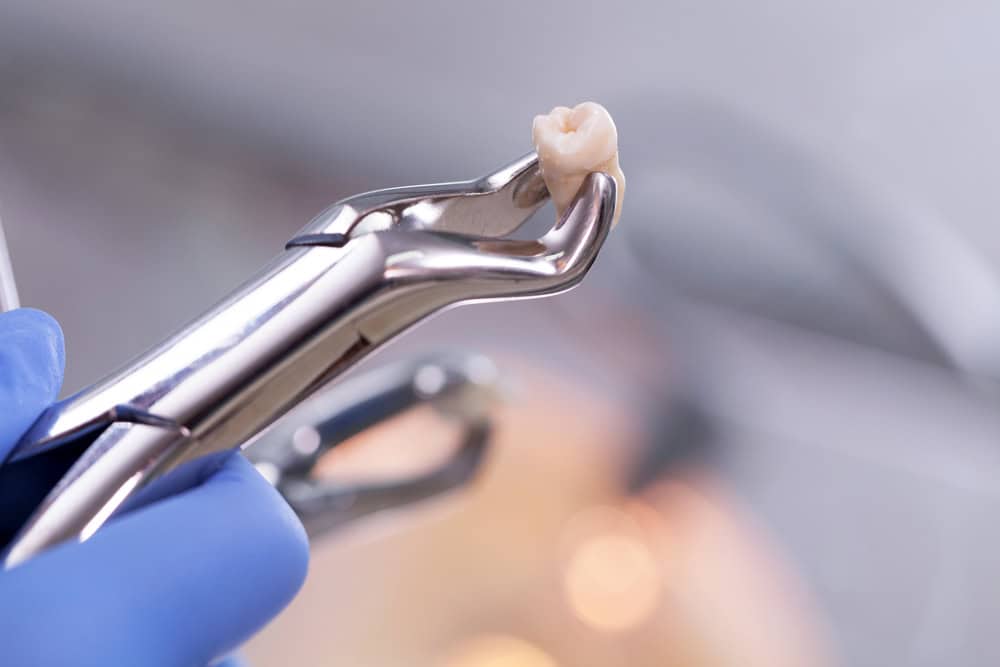Tooth extraction is commonly done for severe decay, broken or impacted teeth, and orthodontic treatments to maintain oral health.
Risks include bleeding, infection, and discomfort. Preparation involves following instructions and disclosing health conditions. The procedure involves anesthesia, gentle removal of the tooth, and post-care to protect bone and nerves. Recovery tips include pain management, swelling reduction, a soft diet, oral hygiene, and follow-up appointments. Complications are rare post-extraction.
Understanding the reasons, risks, and recovery from tooth extraction is crucial for optimal oral health. More insights into the process and tips are available for a smooth experience.
What is a Dental Extraction?
A dental extraction is a dental procedure that involves removing a damaged or unhealthy tooth from its socket in the jawbone. The procedure is typically performed by a dental professional such as a dentist, oral surgeon, or periodontist.
Common Reasons for Tooth Extraction
There are several common reasons a tooth may need to be extracted, ranging from severe decay to overcrowding in the mouth. If left untreated, decay can progress to a point where the tooth is so damaged that extraction becomes necessary to prevent the spread of infection to the surrounding teeth and bone.
A broken tooth, especially if the break extends below the gum line, may require extraction to prevent pain, swelling, and potential infection. Impacted teeth, which are teeth that are unable to emerge through the gums fully, often necessitate extraction to alleviate discomfort and prevent damage to neighbouring teeth.
In some cases, orthodontic treatment may require tooth extraction to address issues like overcrowding and misalignment. Removing a tooth in these situations can reduce the risk of complications and improve the overall effectiveness of the orthodontic treatment. Ultimately, tooth extraction is a common procedure aimed at preserving oral health and preventing further risks to the patient.
Potential Risks of Tooth Extraction
Extraction of a tooth, although often necessary for various dental reasons, carries potential risks that patients should be aware of prior to undergoing the procedure. While tooth extraction is generally safe, potential complications can arise. One common risk is excessive bleeding during or after the procedure. Patients may experience bleeding that is difficult to control, which is why it is crucial to follow the surgeon’s instructions carefully to minimise this risk. Additionally, there is a risk of infection if proper healing protocols are not followed post-surgery. Patients are typically prescribed medication to prevent infection and aid in the recovery process.
Patients may feel pressure or discomfort during the extraction, but the surgeon will ensure the area is adequately numbed. After the tooth is removed, the surgeon will place gauze over the extraction site to help control bleeding and promote healing. Patients must diligently follow post-operative care instructions to reduce the risks associated with tooth extraction and ensure a smooth recovery process.
Preparing for a Tooth Extraction
Before undergoing a tooth extraction procedure, patients should carefully follow pre-operative instructions provided by their dental surgeon for optimal preparation. These instructions may include guidelines on fasting before the procedure, informing the dentist about any medications being taken, and arranging for transportation to and from the appointment if anesthesia will be used. It is crucial to disclose any existing health conditions or concerns to the dentist to ensure a safe extraction process.
Proper preparation for tooth extraction can minimise potential risks and complications during and after the procedure. Patients should be well-informed about the extraction process, including the type of anesthesia used and what to expect during recovery. Following the dentist’s instructions for aftercare, such as taking prescribed medications, avoiding certain foods, and practising good oral hygiene, is essential for a smooth recovery. By preparing adequately and adhering to post-operative guidelines, patients can promote healing and reduce the likelihood of complications following a tooth extraction.
The Tooth Extraction Procedure
When a tooth is extracted, the dental surgeon begins by administering local anesthesia to numb the area around the tooth to be extracted. This ensures the patient does not feel pain during the extraction process. In some cases, where the extraction is complex or multiple teeth are being removed, general anesthesia may be used to induce a temporary loss of consciousness.
The dentist then uses specialised instruments called forceps to grasp the tooth and gently rock it back and forth to loosen it from the surrounding tissues. Once the tooth is successfully loosened, the dentist carefully removes it from the socket. After the extraction, a blood clot forms in the empty socket to protect the underlying bone and nerves during the healing process.
While tooth extractions are generally safe, complications such as infection, excessive bleeding, or nerve damage can occur. Proper post-operative care, including following the dentist’s instructions on pain management, eating soft foods, and avoiding vigorous rinsing, is crucial for a smooth recovery.
Post-Extraction Recovery Tips
Proper post-operative care is essential for a smooth and efficient recovery following a tooth extraction procedure. Here are some key tips to aid in your recovery:
- Manage Discomfort: Take prescribed pain medication as directed by your dentist to alleviate any post-extraction pain.
- Reduce Swelling: Apply an ice pack to the affected area in 20-minute intervals to help minimise swelling.
- Maintain a Soft Diet: Stick to soft foods like mashed potatoes, yogurt, and smoothies to avoid irritating the extraction site.
- Prioritize Oral Hygiene: After the first 24 hours, gently rinse your mouth with saltwater and continue to brush your teeth carefully to prevent infection.
Remember to attend your follow-up appointments with your dentist for proper monitoring of your healing progress.
Complications After Tooth Extraction
After undergoing a tooth extraction procedure and adhering to proper post-operative care, it is important to be aware of potential complications following the extraction. Complications after tooth extraction include infection, pain, swelling, bleeding, nerve damage, and dry socket.
Infection is a common complication that may occur if bacteria enter the extraction site. Symptoms of infection include persistent fever, increasing pain, and foul-smelling drainage. Pain and swelling are normal after a tooth extraction, but if they worsen instead of improving over time, it could indicate an issue. Excessive bleeding that doesn’t stop after the first few hours post-extraction may also signal a problem.
Nerve damage is a rare but serious complication that can cause numbness or tingling in the lips, tongue, or chin. A dry socket, where the blood clot in the extraction site dislodges prematurely, can lead to severe pain. If any of these complications arise, it is crucial to contact your dentist promptly for further evaluation and management.
Key Takeaways
Tooth extraction is a necessary procedure to address various dental issues. Proper preparation and post-extraction care can help minimise complications despite the potential risks involved.
It is important to follow the dentist’s instructions for a smooth recovery. Like a painter carefully crafting a masterpiece, the dentist skillfully removes the problematic tooth, leaving a clean canvas for oral health to flourish.
With the skilled hands of our team at SmileWorks Dental Doreen, we can provide you with expert care and guidance throughout the process. Visit the best dentists at Doreen, VIC 3754, and let us help you achieve optimal oral health and a brighter smile. Your journey to a healthier mouth starts with us at SmileWorks Dental Doreen.




